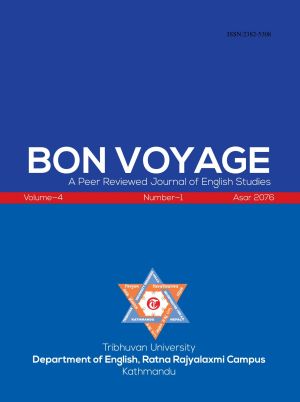Myth as Structural Component: A Study of W. B. Yeats' “Sailing to Byzantium” from Mythical Structuralism
DOI:
https://doi.org/10.3126/bovo.v4i1.54173Keywords:
mythical structuralism, phenotext, genotext, signification, semiological, collective unconsciousness, archetype, denotation, connotationAbstract
Structuralism commonly deals with signs and signification process to produce meaning of any text based on structures tied in signifier and signified. It is theoretical concept developed by Ferdinand de Saussure which, later on, became conversant in art and literature known as structuralism and is applied in literary texts. From the structural sense, myth is one of the prominent components to connect both visible and implicit signification attuned to a language.
Mythical structuralism tends to embody a system of communication where mythical references and allusions indicate message. That is, myth cannot be simply categorized as an object or image. Rather, it is a mode of significations liked in the chain, both apparent and non apparent. Specifically, myth is structural sign of the past whose signification process can be traced into the language in use as in second order. Considering this, myth as structural analysis is applied to see undercurrent mythical allusions and references in W.B. Yeats' "Sailing to Byzantium". I focus on the ideas and theoretical concepts employed by Ferdinand de Saussure, Roland Barthes, and Julia Kristeva. These scholars try to see language as an embodiment of structure: both the visible and invisible within certain linguistic entity incorporated with signs, signifiers, signified and signification process. Myth as the signification process is discussed as latent and visible structures exposed in language.




